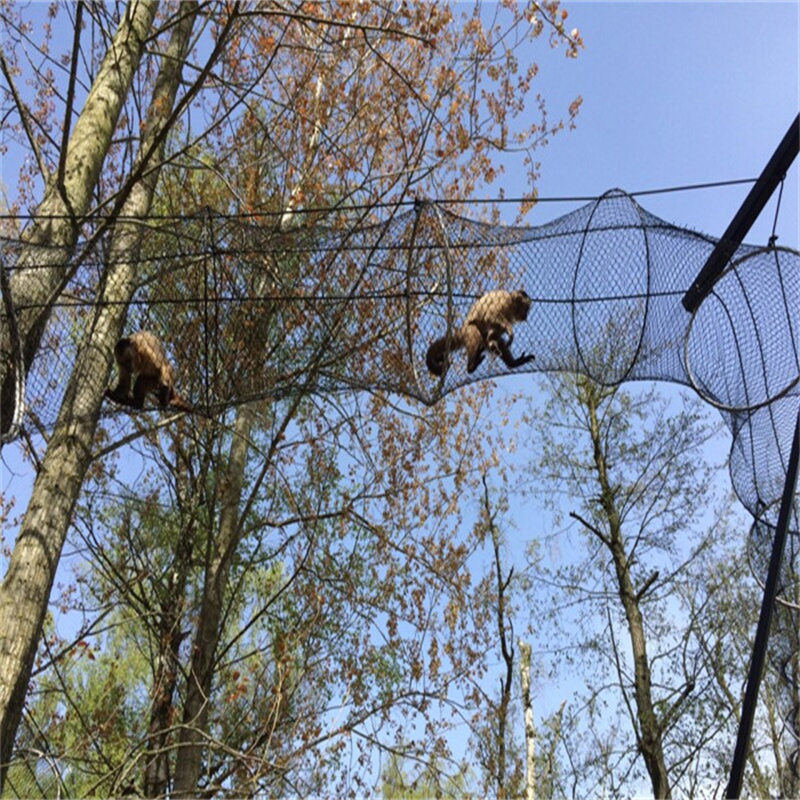Zoo Mesh Cost: Key Pricing Factors and Smart Choices
Building a zoo or expanding one involves many decisions, one of which is choosing the right zoo mesh. This guide simplifies the complex topic of zoo mesh cost. We'll look at factors like stainless steel grades, mesh types, and more. Let's make it easy to decide on the best, budget-friendly option for your zoo project.
1. Stainless Steel Grade and Mesh Aperture
The type of stainless steel you choose for your zoo mesh matters. There are different grades, like AISI 304 and AISI 316. AISI 304 is more budget-friendly, while AISI 316, known for better corrosion resistance, is pricier. Also, the size of the mesh holes (aperture) plays a role in pricing. Smaller holes usually cost more.
2. Mesh Type: Ferrule vs. Knotted-Zoo mesh cost
When it comes to mesh types, you've got two main options: ferrule mesh and knotted mesh. Ferrule mesh is typically more budget-friendly. This is because it's quicker to produce, saving both time and money. So, if you're watching your budget, ferrule mesh is a smart choice.
3. Material Quality and Wire Details
The zoo mesh is made of high-quality stainless steel wires and buckles. The thickness of these wires and their design structure (like 7x7 or 7x19) can affect the price. Thicker and more complex designs tend to be more expensive due to the higher material needs and production effort.
4. Order Quantity and Shipping
How much mesh you need and where you're getting it shipped to also impact the cost. Buying in bulk often means lower prices per unit. Shipping costs vary by location, so consider this in your total cost.
Factors Affecting Zoo Mesh Price cost:
-
Mesh Aperture Size: The size of the mesh aperture directly impacts the price of zoo mesh. Larger mesh apertures are typically more affordable than smaller ones, given the same wire diameter. For example, a 1.20 mm wire diameter with a 50mm x 50mm mesh aperture is more expensive than a 1.20 mm wire diameter with a 60mm x 60mm mesh aperture, regardless of whether it's a Ferrule Mesh or knotted interwoven cable rope mesh.
-
Wire Diameter: The wire diameter also affects the cost of zoo mesh. In cases where the mesh aperture is the same, smaller mesh openings are more expensive than larger ones. For instance, a 50mm x 50mm mesh aperture with a 1.20 mm diameter wire costs more than a 50mm x 50mm mesh aperture with a 1.50 mm diameter wire.
-
Weaving Types: The weaving method influences the price of zoo mesh. Knotted mesh (interwoven cable rope mesh) is more expensive than ferrule mesh because it requires manual labor by skilled artisans, whereas ferrule mesh production involves a significant amount of machine work.
-
Surface Treatment: Different surface treatments impact the cost of zoo mesh. Black Oxide zoo mesh and vinyl-coated meshes are more expensive than untreated stainless steel rope mesh, given the same mesh aperture, wire diameter, and weaving type.
-
Material Type: The material used in the zoo mesh also affects the price. For example, 316 stainless steel mesh is more expensive than 304 stainless steel mesh, assuming the same mesh aperture, wire diameter, and weaving type.
Zoo Mesh Cost and Price examples
The cost of zoo mesh plays a significant role in determining the overall expense of a zoo enclosure. With prices ranging from $6.68 to $118.32 per square meter or $0.76 to $11.98 per square foot, it's essential to understand the factors that influence zoo mesh pricing. This article delves into the elements that affect the cost of zoo mesh, helping you make an informed decision when selecting the right solution for your project.
To give you an idea, here are some sample costs:
- 38mm x 38mm x 2.00mm AISI 304 mesh: $38.19/sqm
- 50mm x 50mm x 2.00mm AISI 304 mesh: $28.98/sqm
- 100mm x 100mm x 2.00mm AISI 304 mesh: $17.87/sqm (Note: These are examples and can change based on market factors.)
Applications of Zoo Mesh
Zoo mesh isn't just for animal enclosures. It's great for bird cages, primate areas, reptile habitats, and even as safety barriers around the zoo. It's all about creating a safe and enjoyable space for both animals and visitors.
Effects on Zoo Construction and Management
- Budget: The zoo mesh cost affects your entire construction budget. More expensive mesh can mean less money for other parts of your zoo.
- Enclosure Size: Expensive mesh can lead to smaller animal enclosures. You want to balance cost with providing ample space for animals.
- Animal Welfare: Choosing an affordable mesh option can mean larger, better environments for animals, promoting their well-being.
Conclusion
When planning your zoo project, considering the cost of zoo mesh is vital. Look at factors like steel grade, mesh type, and more to make smart, budget-friendly choices. Remember, for precise pricing, it's best to talk to a professional. Make your zoo project a success with the right mesh choice!
Latest News
Contact Us

Name: Shibo.Guo
Tel: 86-15690482714
Fax: 86-318-7883678
E-mail: sales@ropemesh.com.au
QQ: 9651140
Whatsapp: 86-15690482714
Add: 1700 NE 13th Ave Apt 105, Miami, FL 33162








 WhatsApp
WhatsApp  Mail inquiry
Mail inquiry QQ online
QQ online